
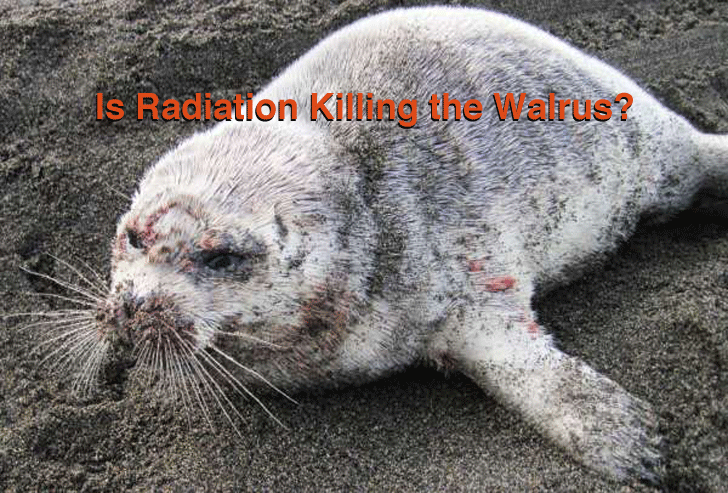
In August 2011 a large herd of Pacific walruses (Odobenus rosmarus divergens) [right] hauled out onto a barrier island near the coastal community of Point Lay, Alaska. Some of the walruses at the haulout site were reported to have bleeding skin lesions, and a ground-based survey confirmed the presence of ulcerative skin lesions on several walrus carcasses and some of the live animals. [Alaskan Field Report (pdf) and Alaskan Walrus Disease Investigation (pdf)]
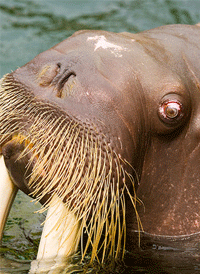 It was initially thought that the skin lesions were caused by some type of invading organism. But tests have ruled out a viral cause and tests for dozens of other known pathogens have been negative. The current belief is that some kind of toxic substance in the water could be causing these symptoms.
It was initially thought that the skin lesions were caused by some type of invading organism. But tests have ruled out a viral cause and tests for dozens of other known pathogens have been negative. The current belief is that some kind of toxic substance in the water could be causing these symptoms.
With the news that the disabled nuclear reactors in Fukushima (Japan) may have leaked enormous amounts of radioactive material in to the Pacific Ocean, radiation is the most likely cause to examine; however, the accident happened just 5 months before the symptoms were visible on the Walrus population. Is it possible for radioactive toxins to travel this fast?
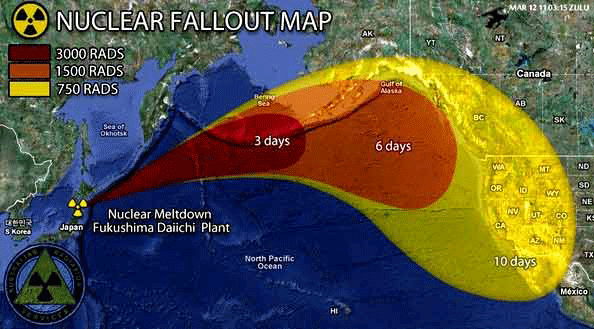
While Alaska did get some radiation [above] from the initial accident in Japan, the Arctic Ocean and Northern territories largely escaped the most worrisome levels of radiation. Another possibility could be that the radiation has entered the food chain, infecting fish that inhabit the West Coast of North America and are eaten by the seals and Walrus.
In addition to the Alaskan reports, Southern California seal watchers were reporting that the populations have dramatically decreased by as much as 60% and that many of the same skin lesions and other symptoms are appearing in that population.
This much we know:
The National Oceanic and Atmospheric Administration has declared the recent deaths of ringed seals in Alaska and Northern Canada an "unusual mortality event". Since mid-July, more than 60 dead and 75 diseased seals, most of them ringed seals, have been reported in Alaska and the reports are continuing to come in.
U.S. Fish and Wildlife Service also identified many diseased and dead walruses a decision by that agency on making an an "unusual mortality declaration" for Pacific walrus in Alaska is pending.
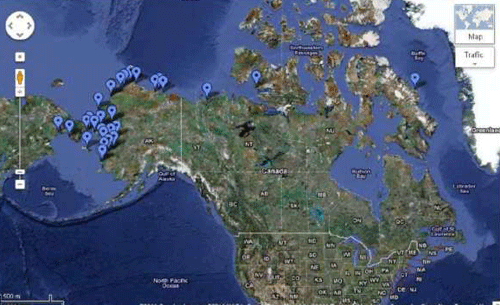
Tests indicate that a virus has been ruled out and is not the cause. Walruses and ringed seals in Russia, and ringed seals in Canada, have reportedly suffered similar symptoms. While it is not clear if the all reports are related, the timing and location of the disease suggests the possibility of transmission between the populations (if it is some infecting agent), or shared exposure to an environmental cause (like radiation in the water).
This is a story that should be closely watched.
This much we know:
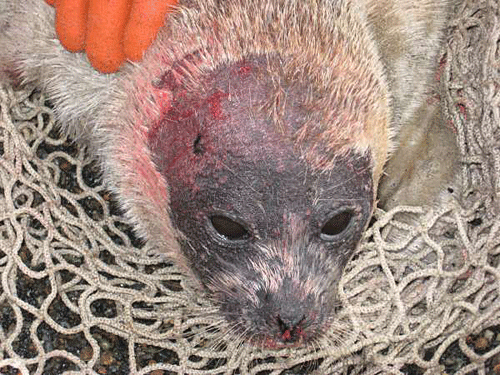
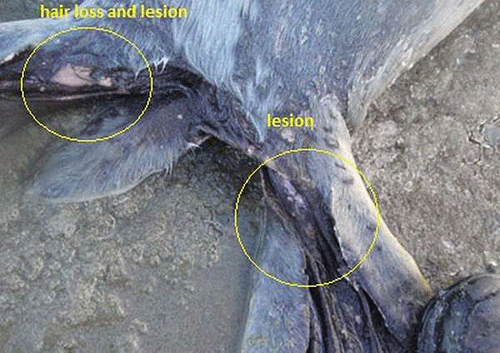
Seals and walruses suffering from this disease have skin sores usually on the hind flippers or face [above]. There is almost always patchy hair loss and lesion.
Some of the diseased animals have exhibited labored breathing and appear lethargic. They don't flee from humans as they would usually do.
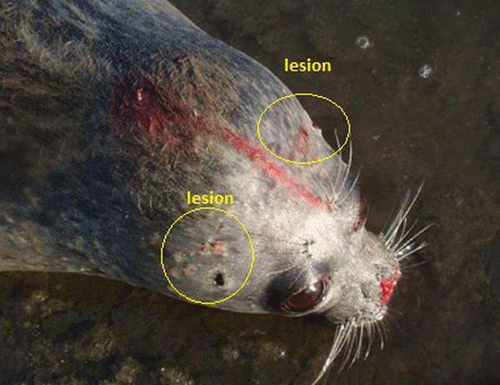
Necropsies have found abnormal growths in the brain and white spots on the liver. Some seals and walruses have undersized lymph nodes which may indicate compromised immune systems.
"These appear to be ulcerated lesions with secondary infections. Opportunistic yeast and fungi and bacteria have invaded. Our analysis is not completed. It could be an environmental factor or more than one disease. We are screening for 18 recognized pathogens, but all the lab results have come back negative. We think defects in the skin are allowing pathogens to migrate into the animals. Bacteria are becoming blood borne and localizing to the liver causing white spots on the liver, hepatitis and fluid in the lungs."
--Dr. Stephen Raverty, veterinary pathologist with the Provincial Veterinary Diagnostic Lab in British Columbia. [source]
